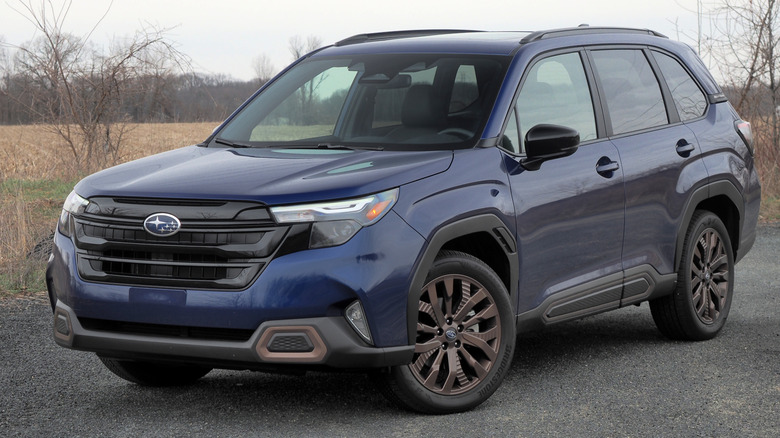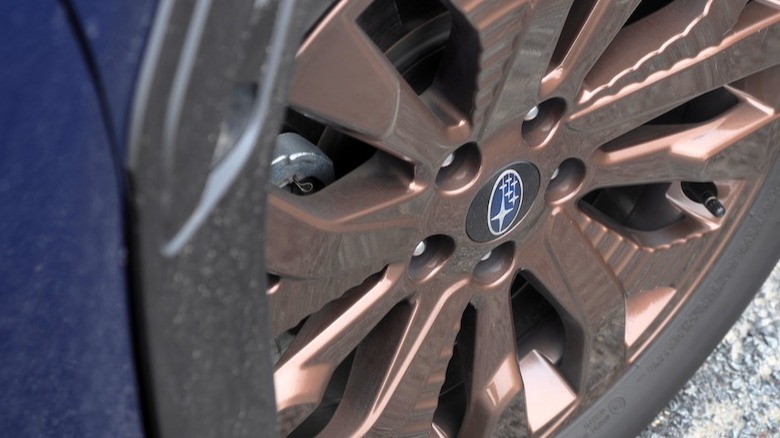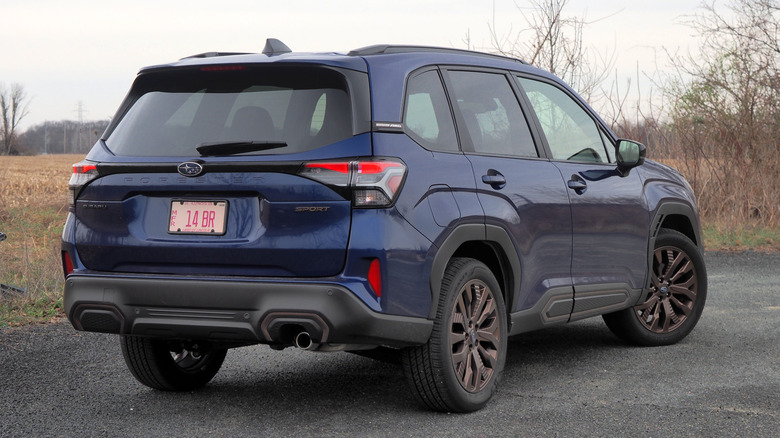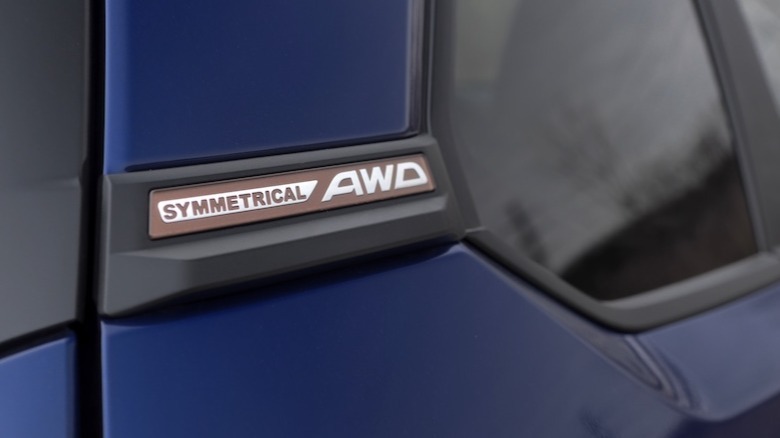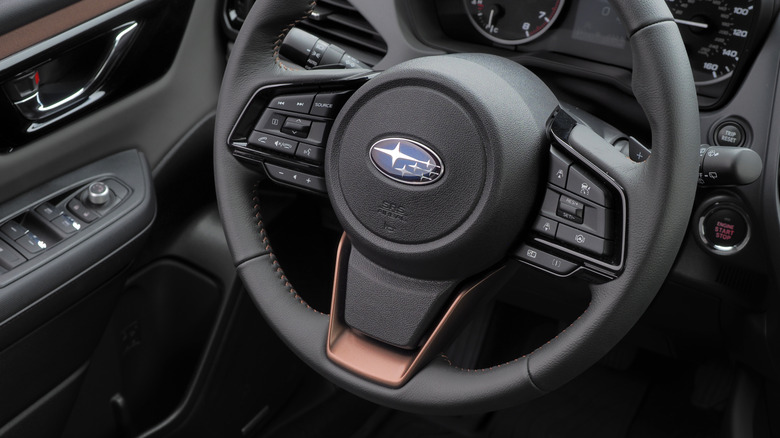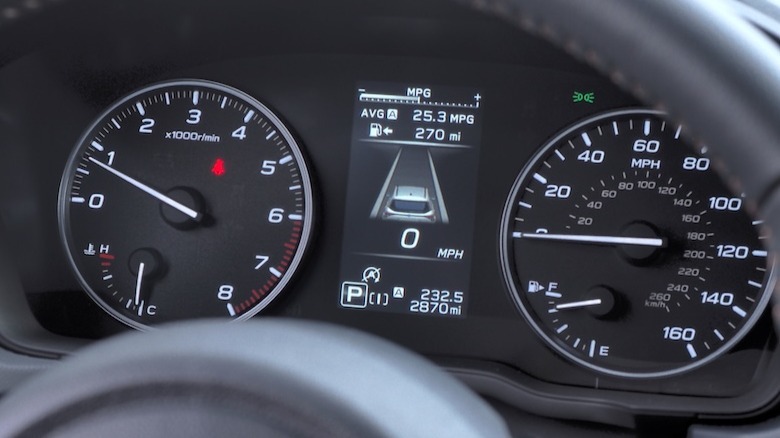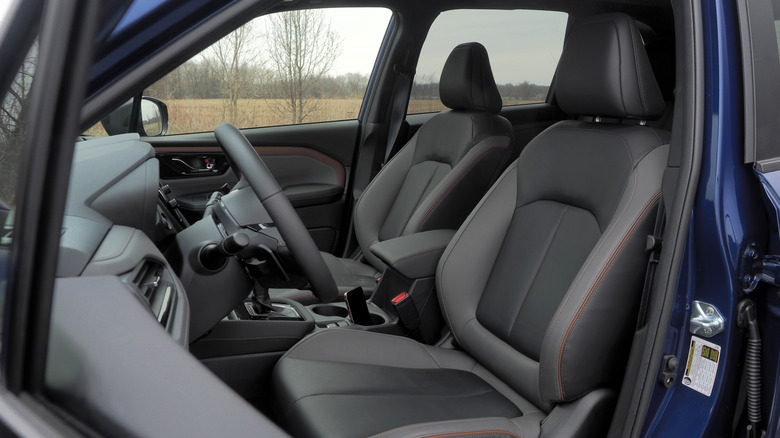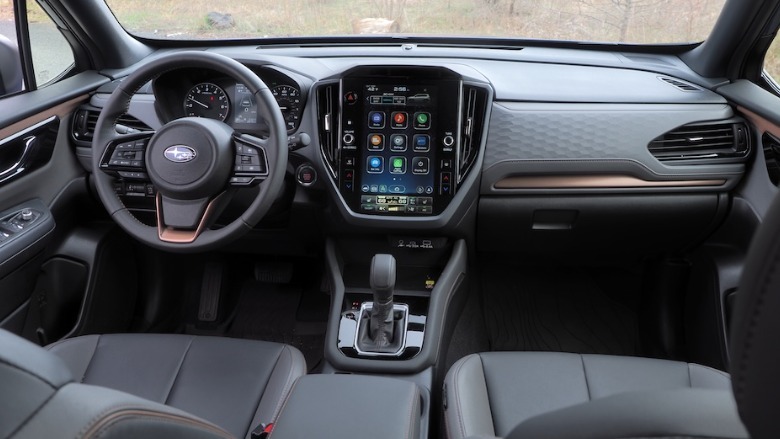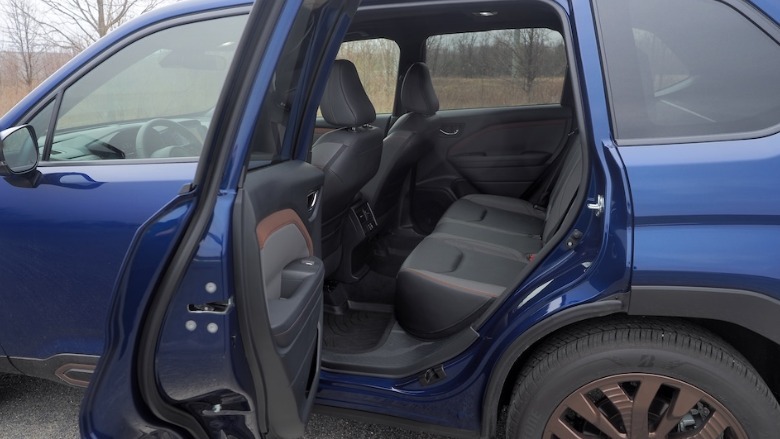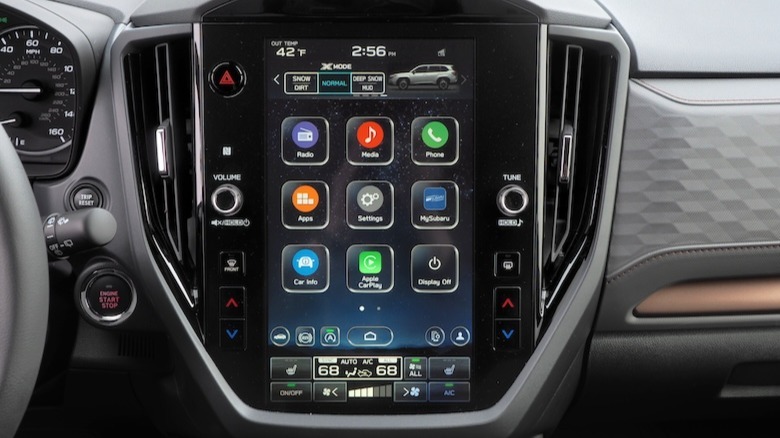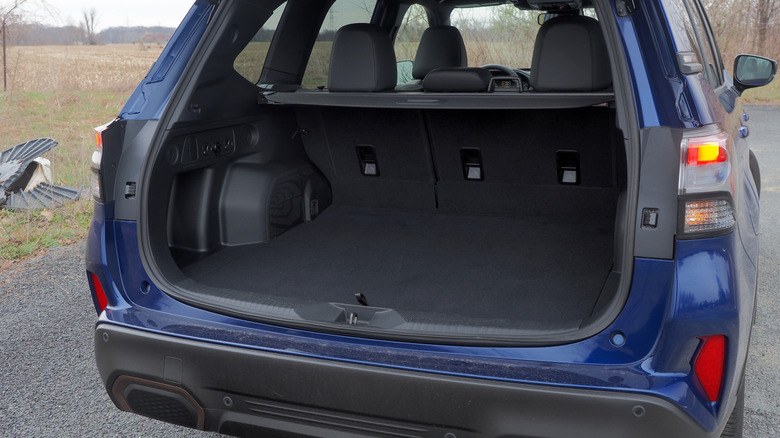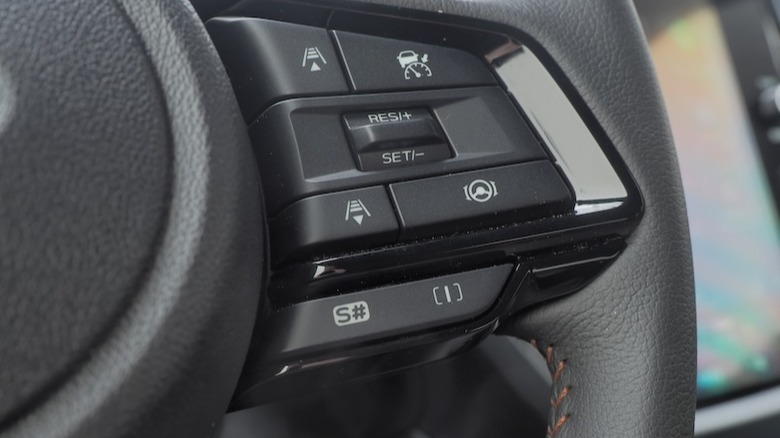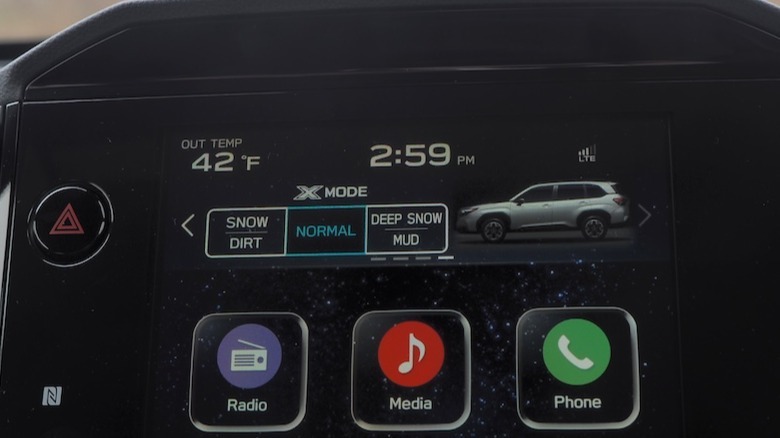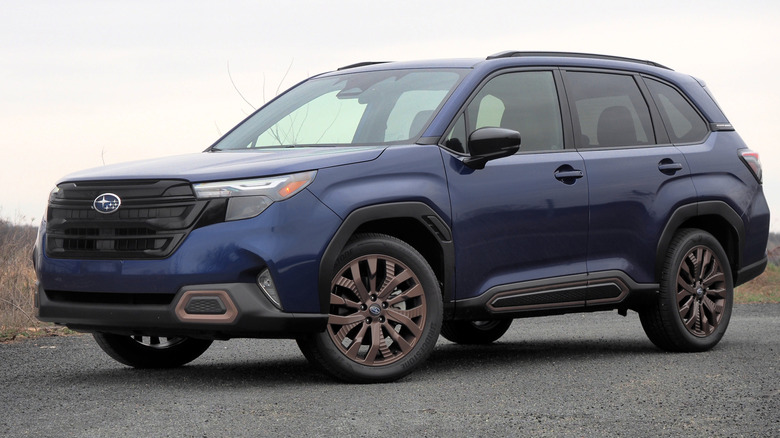2025 Subaru Forester Sport Review: Everything You Expect (For Better & Worse)
- Standard AWD and decent ground-clearance
- Solid equipment list on all but Base trim
- Comfortable ride
- Engine has middling power and can sound rough
- Economy isn't great
- Infotainment system can be frustrating
Subaru knows its audience well. Then again, when it comes to the Forester, it's had ample time to make that acquaintance. The 2025 Forester is the sixth generation of the compact crossover SUV, a nameplate spanning nearly three decades (and in fact, it's only in the most recent handful of those generations that it was more SUV and less station wagon). For Forester fans, it's a familiar affair. For the rest of us, there's appeal here mixed in with some head-scratchers.
The 2025 Forester range kicks off at $29,995 for the gas-only engine, while the hybrid version starts from $34,995 (both plus $1,420 destination). As with other models in Subaru's lineup, things split out depending on whether you're more inclined to use the standard all-wheel drive on-road or off. For the former, there are versions like the Forester Sport you see here; for the latter, the Forester Wilderness follows a familiar approach to nudging the ruggedness credentials up.
Where the Wilderness trim gets extra cladding and smaller wheels shod in chunkier rubber, the Forester Sport has 19-inch alloys in a handsome bronze finish. Overall, this generation of Forester is the most SUV-esque so far in its overall silhouette (a strategy Subaru has taken and run with for the new 2026 Outback).
Not super-powerful, not super-frugal
Subaru's base engine for the Forester is a naturally aspirated 2.5-liter BOXER four-cylinder. On this Sport trim — and the Base, Premium, Limited, and Touring — it's rated at 180 horsepower and 178 lb-ft of torque. The same engine in the Forester Wilderness gets 182 hp and 176 lb-ft. A CVT is standard, with either seven or eight faux gears that you can clack through with the steering wheel paddles on select trims.
More appealing is the new 2025 Forester Hybrid, a late addition to the line-up. While a collaboration with Toyota, it still uses Subaru's familiar 2.5-liter BOXER-four, though here it's switched to the more frugal Atkinson cycle. To that, two motor-generators add some extra propulsion grunt as well as charging up the small battery. It's clever, though not a huge uptick in potency from the non-hybrid: there's 194 total system horsepower.
How much of a difference you'll see, in fact, depends on where you drive most commonly. Comparing this Forester Sport with the Sport Hybrid, for instance, the former is EPA rated for 28 mpg combined while the latter lands at 35 mpg. However, only two points separate the highway economy rating (32 mpg versus 34 mpg); it's the city efficiency — 25 mpg for gas-only, versus 35 mpg for the hybrid — where the electrified Forester really shows its hand.
The badge says sport, but the ride doesn't agree
My own driving — leaning more around town than at highway pace — landed at 25 mpg. The non-electrified Forester isn't slow, but it's not exactly exciting, either. The pep of Subaru's turbocharged BOXER would be appreciated: even with the automaker's favored CVT, which will never be described as exciting, the forced-induction 2.5-liter used in the 2025 Outback feels a whole lot more enthusiastic with its 260 horses.
Instead, the Forester is a little ponderous and the BOXER-four can be on the loud side, but it's generally dependable. Despite what the Sport badge might suggest, the suspension here is tuned very much on the soft side. Expect body roll in corners, then, and a compliance that isn't offensive around town or, indeed, if you dare take your Forester off-road. Standard all-wheel drive and 8.7-inches of ground clearance should lend some confidence there, even if I'd still be afraid of scuffing the lovely wheels.
Skip the Base trim
On the inside, the Forester is a familiar affair. The Base trim is particularly barebones: Subaru's dual 7-inch displays for infotainment with a single USB-A port, no keyless entry with push-button start, no power driver's seat or panoramic moonroof, no rear armrest and no rear seat tilt, no heated front seats, and a 4-speaker audio system.
Premium trim and up addresses all that, with heated front seats in the All-Weather Package, the option of a heated steering wheel from Limited and up, and heated rear and ventilated front seats on the Touring and Touring Hybrid. The Sport gets faux-leather upholstery, but misses out on the Hybrid's fully-digital instrument cluster; instead there's a small display sandwiched between analog dials. A power tailgate is standard on the Sport Hybrid and optional on the Sport.
The 11.6-inch Subaru Starlink infotainment system — no relation to the satellite internet service — is standard on the Sport, with a 6-speaker audio system. The latter was upgraded on this particular Forester with a $1,700 option package that added Harman Kardon audio and a power tailgate with hands-free activation, among other things. Subaru's infotainment can be frustrating: on the plus side, the screen is flanked by dedicated switchgear for volume, tuning, and temperature adjustment of the standard dual-zone climate control.
Annoyances, though, include a cluttered UI that can be frustratingly sluggish, particularly when you first start the Forester up. It takes a surprisingly long time for the touchscreen to be responsive, and for the wireless Apple CarPlay or Android Auto to reconnect.
Rivals have more cargo space
Passenger space front and rear is about on a par with what you'd get in a Honda CR-V or Toyota RAV4. However, the Subaru's 27.5 cu-ft trunk with the rear seats upright is snug for the segment: the Toyota offers 37.5 cu-ft, and the Honda 39.3 cu-ft. Drop the 60/40 split rear bench, and the Forester can handle 69.1 cu-ft (the Base trim pushes that to 74.4 cu-ft) versus the 69.8 and 76.5 cu-ft of the RAV4 and CR-V, respectively.
Both non-hybrid and hybrid versions of the Forester are rated to tow 1,500 pounds; the gas-only Wilderness doubles that to 3,000 pounds. A gas CR-V can tow 1,500 pounds; the hybrid version dips to 1,000 pounds. The RAV4 is rated for 1,500 pounds gas-only, or 1,750 pounds for the hybrid.
Subaru's EyeSight safety system is standard across the board: it includes adaptive cruise with lane-centering, lane departure warnings and lane-keep assist, automatic emergency steering, and pre-collision brake assist. Blind-spot warnings with lane-change assist and rear cross-traffic alert is optional on the Premium, and standard on trims above that.
Only the top Touring trims get a 360-degree camera, though; the Wilderness has a 180-degree front camera (plus its reversing camera). Everything else makes do with the mandated reversing camera. I found Subaru's safety tech — particularly for lane-keeping — can be finicky, and over-react with its warnings.
2025 Subaru Forester Sport Verdict
There's plenty to like, here, for the Subaru faithful. The 2025 Forester is easy and relaxed to drive; gets the reassurance of standard all-wheel drive across the board; and is unstressed when faced with time off the asphalt. No, it wouldn't be my first SUV pick to go off-road seriously, but its specs for things like ground-clearance beat the Toyota and Honda competition.
As all-round daily drivers, though, the CR-V and RAV4 are tough to beat. Toyota's infotainment is sleeker and swifter than the Forester's; Honda's standard safety package is more generous. None are the right choice if you're looking to set your scalp aflame with performance.
At almost $38k as equipped for this particular Forester Sport, were it my budget I'd probably look to a hybrid instead. The Forester Sport Hybrid is about that with destination and before options, after all, but slightly better equipped than the gas-only model anyway.
